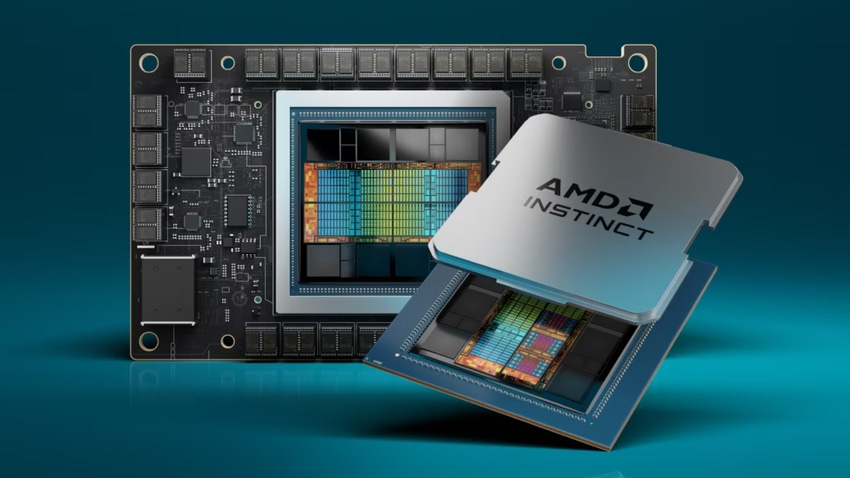AI, Vehicles Driving Electronics Industry Growth
Demand for high-speed processors and vehicle electronics will test the ability of suppliers to keep up.

At a Glance
- After several roller-coaster years, the electronics industry is forecast to resume growth in 2024.
- Chip demand for AI and high-end computing will pace growth
After some lackluster quarters where demand for many electronic components and semiconductors fell, there’s a renewed feeling that the electronics industry will see a growth year in 2024. And not surprisingly, some of the markets driving this growth, including electric and autonomous vehicles, the IoT, and artificial intelligence and machine learning, are expected to continue pacing industry growth.
The electronics industry has been on a bit of a roller coaster in recent years, with the COVID-19 pandemic creating shortages for all types of components. Once the pandemic faded, the industry went into a bit of a slump, particularly as companies whose products go primarily into PCs, servers, and some consumer electronics saw their fortunes tumble. But in recent months, there have been signs of a turnaround.
According to SupplyFrame’s Commodity IQ Lead Time index, a vast majority of 36 component categories tracked by Supplyframe saw lead time declines, which according to the firm trongly indicates a normalization of inventory conditions across the supply chain. This is shifting the balance of power to buyers, who have long been at the mercy of suppliers charging high prices and dealing with delivery times extending to several months.
Market research firm Gartner is projecting global semiconductor sales to rise 16.8% to $624 billion, with revenue for all types of chips, led by memory, will increase.
According to Gartner, developments in generative AI (GenAI) and large language models are driving demand for deployment of high-performance GPU-based servers and accelerator cards in data centers. This is creating a need for workload accelerators to be deployed in data center servers to support both training and inference of AI workloads. Gartner analysts estimate that by 2027, the integration of AI techniques into data center applications will result in more than 20% of new servers including workload accelerators.
Semiconductor fab utilization is also expected to normalize, according to Michael Yang, Senior Research Director of Semiconductors for market intelligence firm Omdia. In the firm’s eBook 2024 Trends to Watch, Yang noted the industry has gone through a full cycle of volatility and expects 2024 to fab utilization settling back down to a more manageable rate. Yang added, though that as semiconductor suppliers continue to invest heavily in capital expenditures as part of the onshoring trend, the industry could eventually face a challenged environment in which utilization will dip below profitability.
Meeting Chip Demand
But this inventory normalization may not help OEMs as pour more R&D into next-generation electronics. Development of high-end supercomputers and servers to handle mountains of data is in turn creating an almost-feverish pace of development of MPUs and GPUs. Recent press articles have expressed concern that current hardware may not be able to keep up with the bulging data demands of generative AI and other AI applications.
Omdia’s Michael Yang said in the firm’s 2024 Trends to Watch eBooK that leading microprocessor suppliers Intel and AMD are readying to launch AI-optimized MPUs for everyday laptops and desktops. He foresees the competitive landscape shifting beyond the cloud with new applications and usages taking advantage of new capabilities.
Intel, during its Developer event in September, focused the conversation heavily on AI, with CEO Pat Gelsinger stating that Intel was developing a number of processors for AI, including ones that would turn the PC into a machine handling robust AI applications. Nvidia has for several years been developing processors aimed at AI. Not to be left out, AMD recently unveiled its Instinct™ MI300X accelerators, which the company claims provides industry leading memory bandwidth for generative AI1 and leadership performance for large language model (LLM) training and inferencing, along with its AMD Instinct™ MI300A accelerated processing unit (APU) for HPC and AI workloads.
AI’s Impact on Design
Artificial intelligence is likely to drive many changes in the semiconductor ecosystem. In an e-mail, Vikram Bhatia, Head of Synopsys Cloud Product Management & GTM Strategy, said “As more chipmakers design and verify on the cloud, their interest in optimizing costs will continue to grow. One effective avenue to lower costs is by deploying spot virtual machines (VMs), which stems from excess capacity of specific compute VMs that cloud providers make available at heavily discounted prices when demand at a given moment does not meet their capacity projections.”
Bhatia added, “The challenge with running EDA workloads on spot VMs is, they can be removed on short notice. EDA workloads need to be able to recover from a spot VM termination signal to avoid lost processing time – AI-driven technologies that utilize termination signal predictions to manage EDA workloads between spot and on-demand VMs have emerged to address this challenge.”
EDA design tools have rapidly ramped up the use of AI and machine learning algorithms to streamline task such as simulation, and that trend is expected to continue. The use of AI to collect historical and trend data will aid simulation by providing a rich database to provide faster, more accurate results. “Interest in simulation data management (SDM) will soar out of a need to leverage historical simulation data to build better AL/ML models, a key value proposition for SDM,” said Yeshwant Mummaneni, Chief Engineer, Cloud, for Altair, an EDA tools company.
Vehicle Growth
Beyond AI, much of the buzz continues to center around electronics and software for vehicle applications involving electric and autonomous vehicles. Research and development continues to proceed full throttle in areas such as lithium-ion batteries, vehicle controllers, software-defined vehicles, driver assistance systems, autonomous driving, sensors for all types of vehicle systems, and vehicle communications.
According to McKinsey and Company, the global automotive electronics and software market is expected to reach $462 billion by 2030, representing a compound annual growth rate of 5.5%.
Other electronics sectors are seeing a rebound also. For instance, OLED displays are expected to grow by 7% year-over-year in 2024, driven by larger-sized TV and advanced display technologies, according to David Hsieh, Senior Director of Displays for Omdia. Overall, OLED technology is expected to account for over 40% of total display revenues in 2024.
Chiplets and Multi-Die Packages
Chiplets and multi-die packages made a lot of news in 2023, as semiconductor suppliers and OEMs sought ways to more effectively package various processor functions. This in turn has created challenges for system designers.
“As Moore’s law slows, multi-die system architectures offer the means for innovation to continue to accelerate,” said Shekhar Kapoor, Senior Director, Product Line Management, Synopsys, in an e-mail statement. “In 2024, we’ll see a shift towards automated 3DIC designs. Multi-die systems design is a manual process, so this will not only speed up the process but also make it more robust, ensuring that performance elements do not end up left on the table. While it won’t happen overnight, the shift will eventually encompass everything from architectural design and implementation to analysis and verification.”
About the Author(s)
You May Also Like





